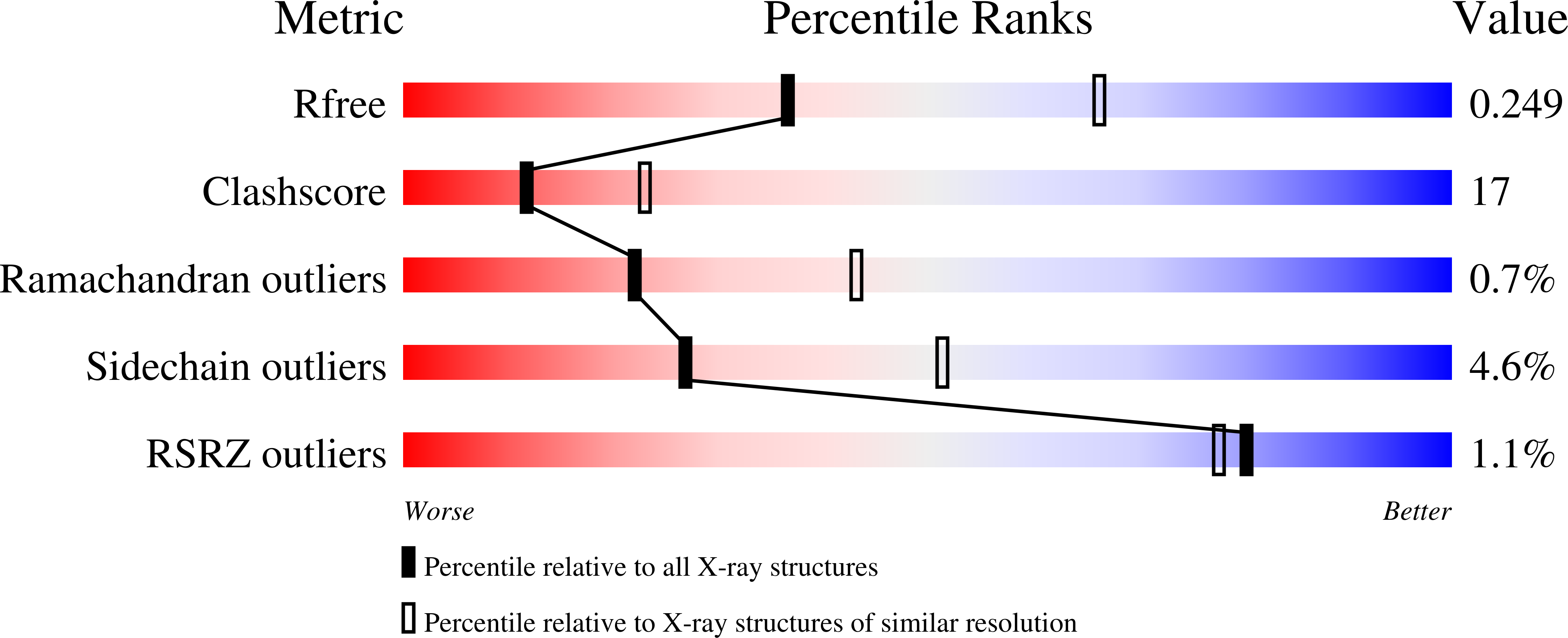Terpyridine-platinum(II) complexes are effective inhibitors of mammalian topoisomerases and human thioredoxin reductase 1.
Lo, Y.C., Ko, T.P., Su, W.C., Su, T.L., Wang, A.H.J.(2009) J Inorg Biochem 103: 1082-1092
- PubMed: 19525010
- DOI: https://doi.org/10.1016/j.jinorgbio.2009.05.006
- Primary Citation of Related Structures:
2ZZ0, 2ZZB, 2ZZC - PubMed Abstract:
Terpyridine-platinum(II) (TP-Pt(II)) complexes are known to possess DNA-intercalating activity and have been regarded as potential antitumor agents. However, their cytotoxic mechanism remains unclear. To investigate the possible mechanism, a series of TP-Pt(II) compounds were prepared and their biological activities assessed. The DNA binding activities of the aromatic thiolato[TP-Pt(II)] complexes were stronger than the aliphatic 2-hydroxylethanethiolato(2,2':6',2''-terpyridine)platinum(II) [TP(HET)]. TP-Pt(II) complexes inhibited topoisomerase IIalpha or topoisomerase I activity at IC(50) values of about 5 microM and 10-20 microM, respectively, whereas the human thioredoxin reductase 1 (hTrxR1) activity was inhibited with IC(50) values in the range of 58-78 nM. At the cellular level, they possessed cytotoxicity with IC(50) values between 7 and 19 microM against HeLa cells. Additionally, using X-ray crystallography and matrix-assisted laser desorption/ionization (MALDI) mass spectrometry, we elucidated that the TP-Pt(II) complexes inhibited hTrxR1 activity by blocking its C-terminal active-site selenocysteine. Therefore, TP-Pt(II) complexes possess inhibitory activities against multiple biological targets, and they may be further studied as anticancer agents.
Organizational Affiliation:
Department and Institute of Pharmacology, National Yang-Ming University, Taipei, Taiwan.



















